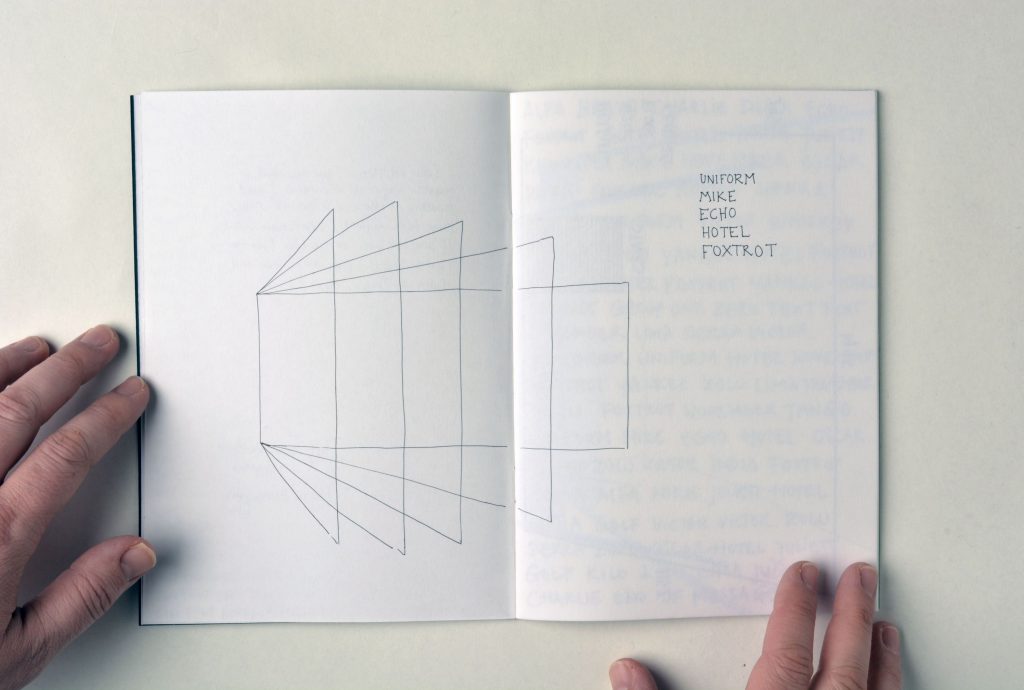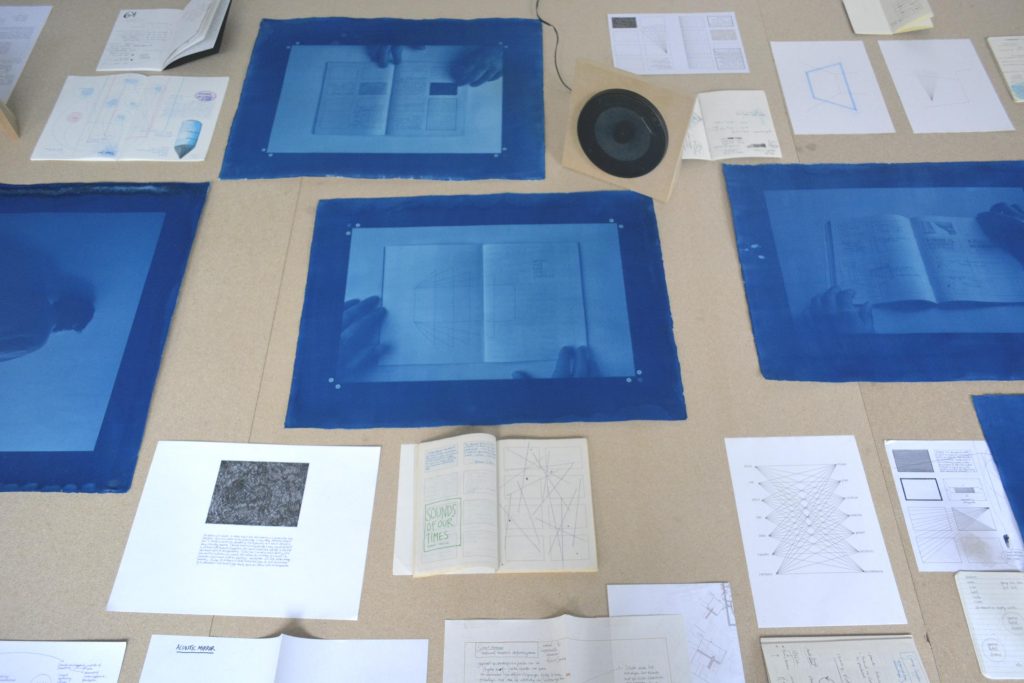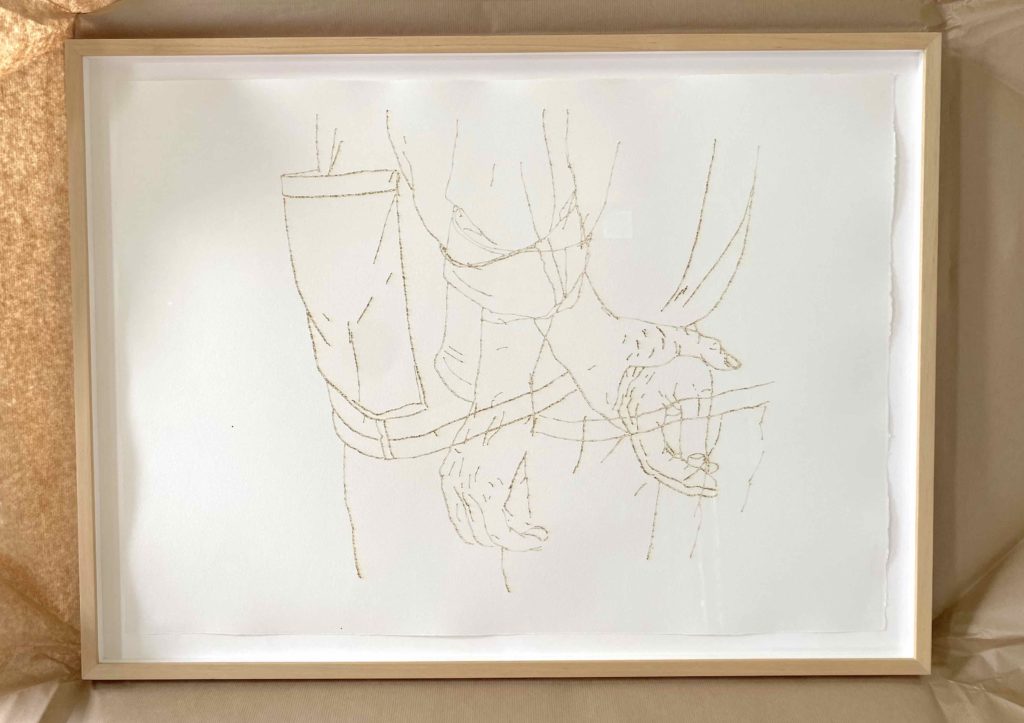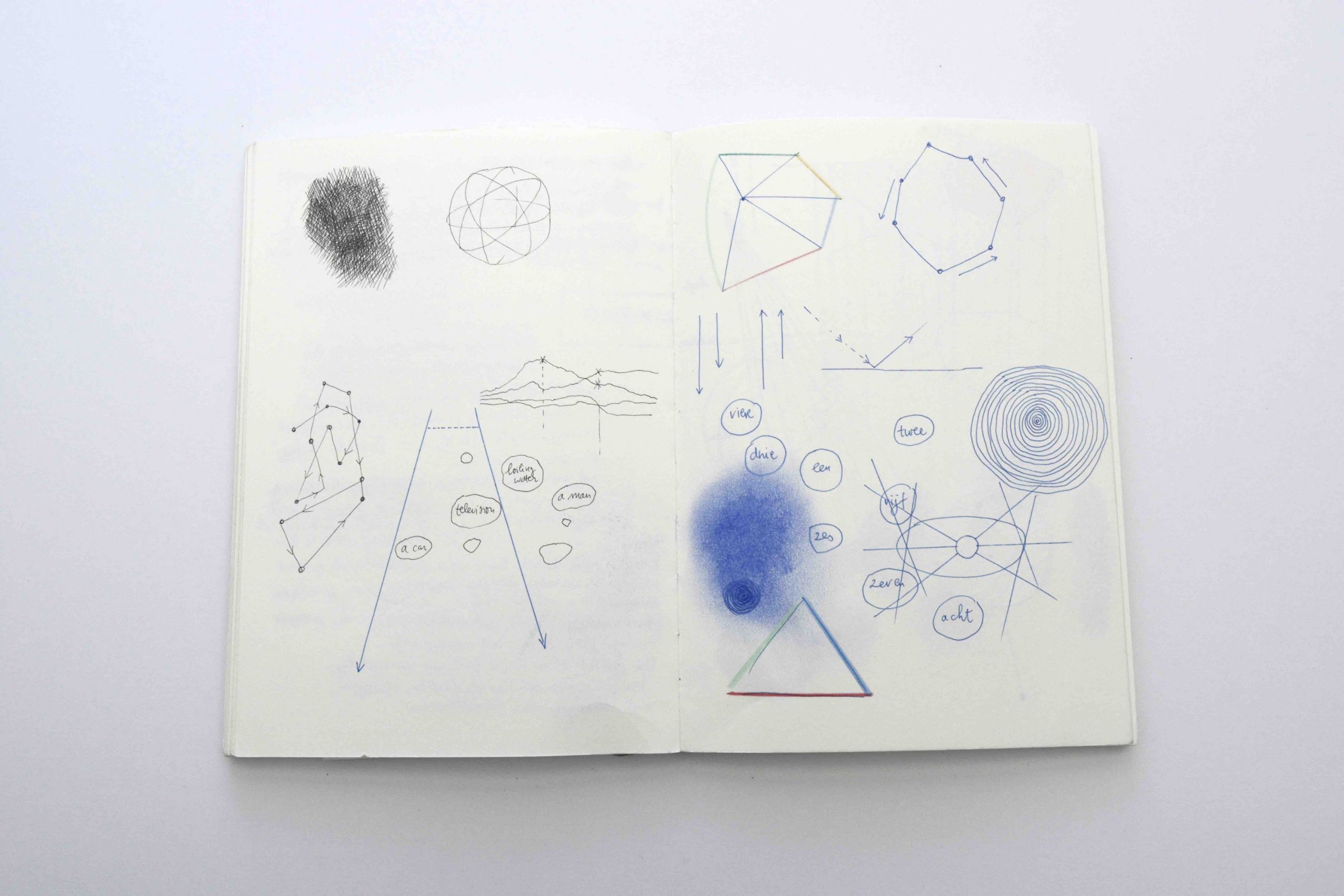“It is not necessary that you go out of your house. Remain by your table and listen. Do not even listen, only wait. Do not even wait, be completely still and alone. The world will offer itself to you to be unmasked; it cannot do otherwise, in ecstasy it will write before you.” - Franz Kafka
Gently — however gently I walk I still make sound on this very thick carpet
This is also a message from somebody a whisper one can hardly call a whisper and this sound is also a word
Even screeching machinery never deafened me but now I cover my ears tightly with both my hands
Then even more loudly I hear human blood coursing through me I hear a voice speaking to me the voice so infinitely tranquil
Shuntaro Tanikawa (2011) The Art of Being Alone, Cornell University Press, p78
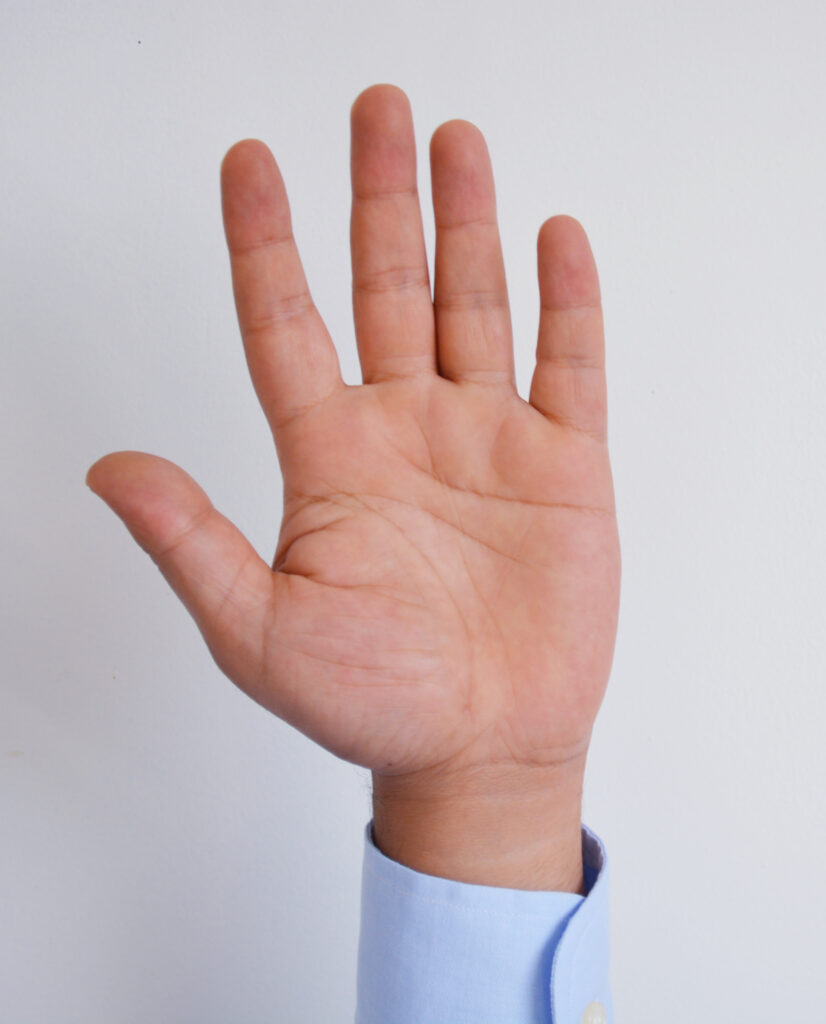
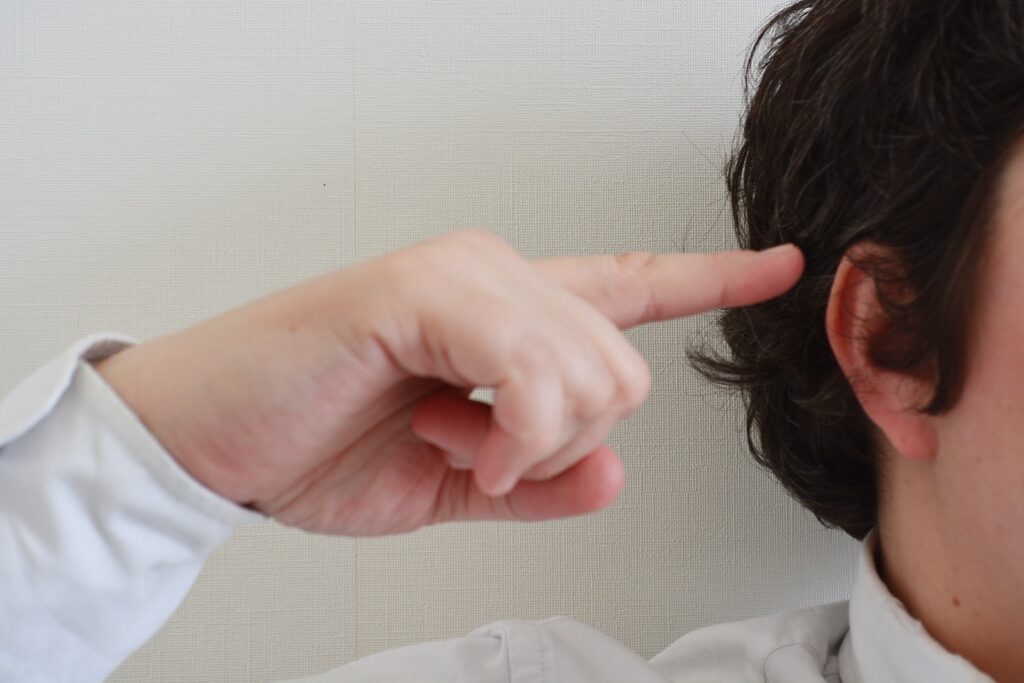
Often when I am sitting in empty spaces listening to nothing happen, and anticipating something’s arrival, I think of this self-fulfilling prophecy: that we experience what we want to experience – and hear what we are expecting to hear. And those who are besieged by voices or music are merely doing what we all do, only in supercharged mode, like the protagonist of William Gibson’s Pattern Recognition, with her psychological sensitivity to corporate symbols and her phobia of the Michelin Man.
RECENT WORKS
Too Body to Fail
Performance in library De Krook Ghent. Based on the master seminar, in collaboration with Pieterjan Ginckels.
Contemporary developing art and design practices are performative: as we produce, we engage in permanent exposure. We move through studio visits, act out desk crits, and feed our screens with cultivated online personae. Always on, online, live. Practice is also collective, in conversation, networked, and public: By immersing in performance experiments, we will expand our experiences and understanding of the performative and physical/virtual presence of ourselves and our practice.
As tutors of this performance we deepen the understanding of “the self” and guide students towards critical positions to positively and productively engage with the worlds around them.
Grey Alder
A series of drawings and a sound work presented at Kunstenfestival Watou during July and August 2023.
“The nights brought heavy bombardements like swift, devastating summer thunderstorms. I would lie on my bunk on a mattress of fresh grass, and listen, with a quite unjustified feeling of security, to the explosions all around that send the sand trickling out of the walls.”
In “Storm of Steel” Ernst Jünger not only depicts the experience of combat at the German front line during World War One. In his memoir you can find moments of contemplation, wild and unexpected hilarities, and observations of tiny things from his umwelt. “War as an inner experience.” The audiovisual work “Grey Alder” is not an reenactment, documentation or representation (of the horrors) of the war, but follows the auditory observations and hallucinations of nature and warfare. In this work I focus on the act of listening in the trenches, dugouts and Westhoek landscape to establish a sense of the darkness.
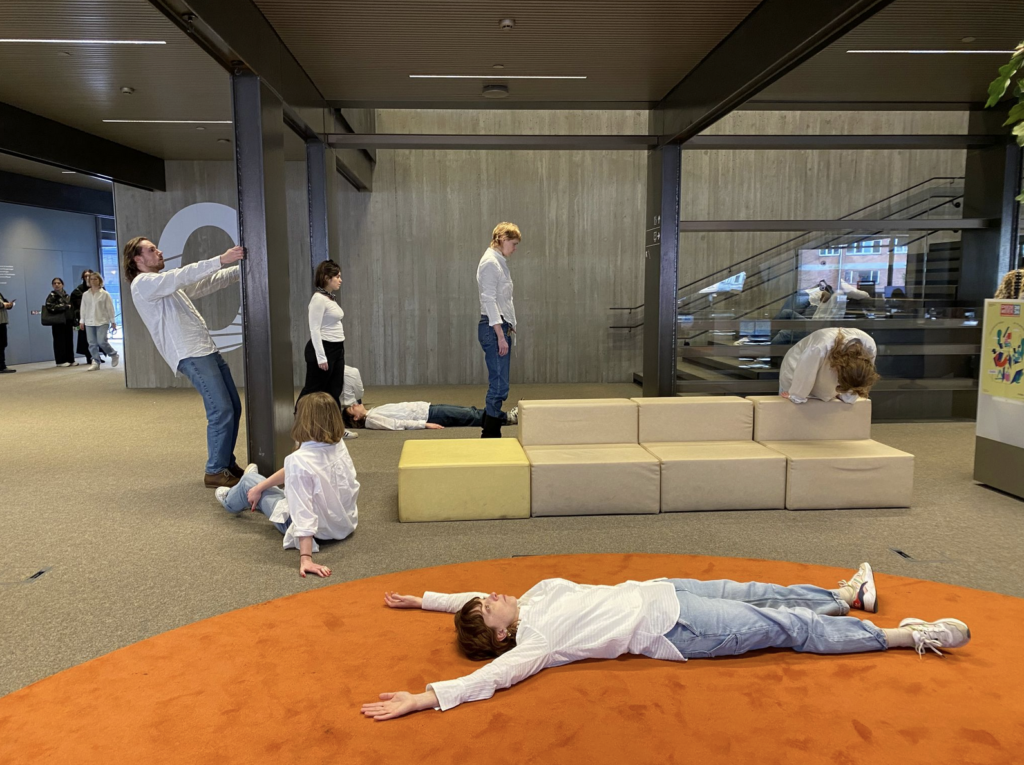
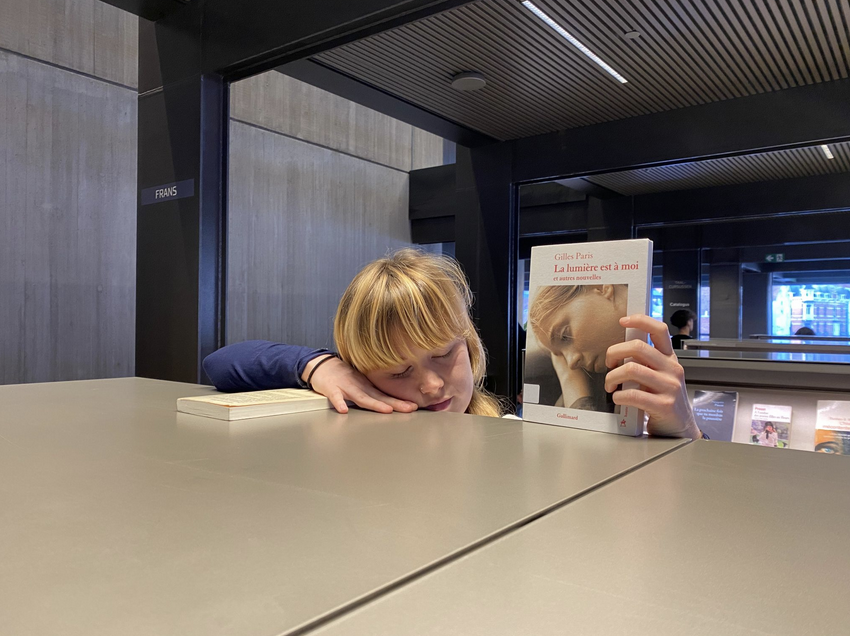
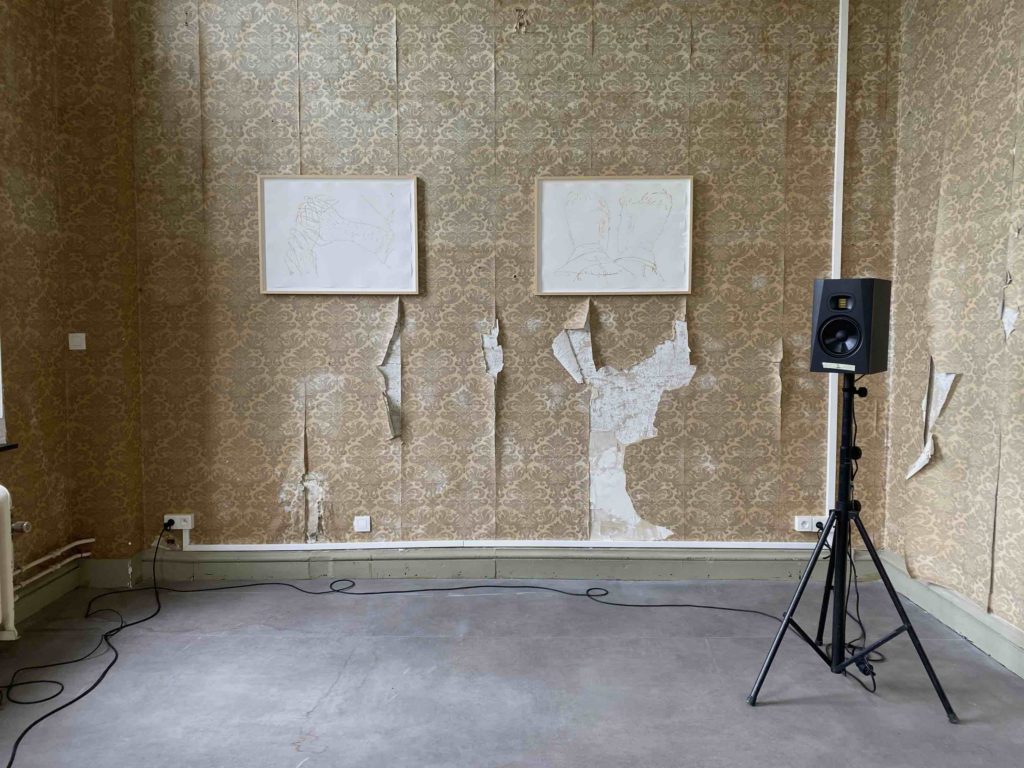

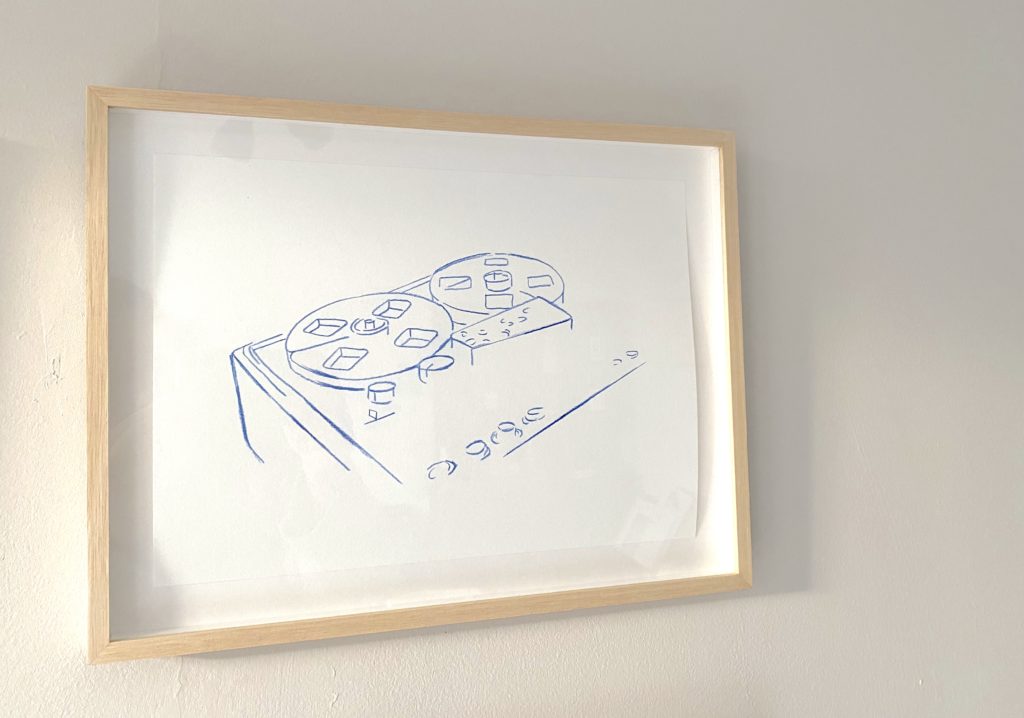

We Meet on Empty Walls
I was part of the exhibition “On Resonance” curated by Eric Thielemans, about the daily magic in the practice of contemporary artists and musicians in gallery CASSTL. In the 48 hour score for an exhibition I presented a selection of drawings and a video work, in collaboration with performer Niels De Meirleir. Recorded on the campus of KULeuven, the subdivision Acoustics and Architecture. Many thanks to Monika Rychtarikova for letting us work in the echo chamber and dead room. Location: CASSTL gallery, Antwerpen 25-28 November 2022.

On the Process of Becoming Silent and Listening
On the Process of Becoming Silent and Listening is an essay film by Dutch composer, artist and researcher Esther Venrooy. The starting point is a text about perceiving (looking, listening, feeling) a space. It is not so much about the tangible things that create a space or environment, but about how one can experience a space through stillness, listening and slipping into a dreamlike state of mind. The cinematic images are physical, standing on the same level as the viewer, with the filmed performers being life-sized. Slow and meditative camera movements are scanning the rooms, exploring and at the same time reserved, which at certain moments contrasts with the abstract and sometimes noisy soundtrack.
Première Festival “Zindering” curated by Jelle Dierickx, Festival van Vlaanderen Mechelen, 12 december 2021 in Kunstencentrum Nona, Mechelen, Belgium. Audiovisual installation with two screens and sound – Performers: Tim Choin, Niels De Meirleir, Kapinga Muela Kabeya, Roos Nieboer, Taoufik Saadane & Mirte Vieren – Commission: Festival van Vlaanderen Mechelen “Zindering” December 2021.
With the support of: KULeuven, LUCA School of Arts, Kunstenbibiotheek Gent, MSK Gent, Boekentoren Gent, Sint-Lucas Bibliotheek Gent, Vidi Square, Kunstencentrum Nona & Festival van Vlaanderen Mechelen/Kempen.
Works of artists in the video: Alfred Roll (FR) La fête de Silène, oil on canvas (1879) / Jan Antonie van der Ven (NL) De goddelijke hoop, marble (1841) / Egide Rombaux (BE) Le mont de Vénus, bronze (1893) Special Thanks to: Luc Vints, KADOC, Dienst Cultuur KU Leuven
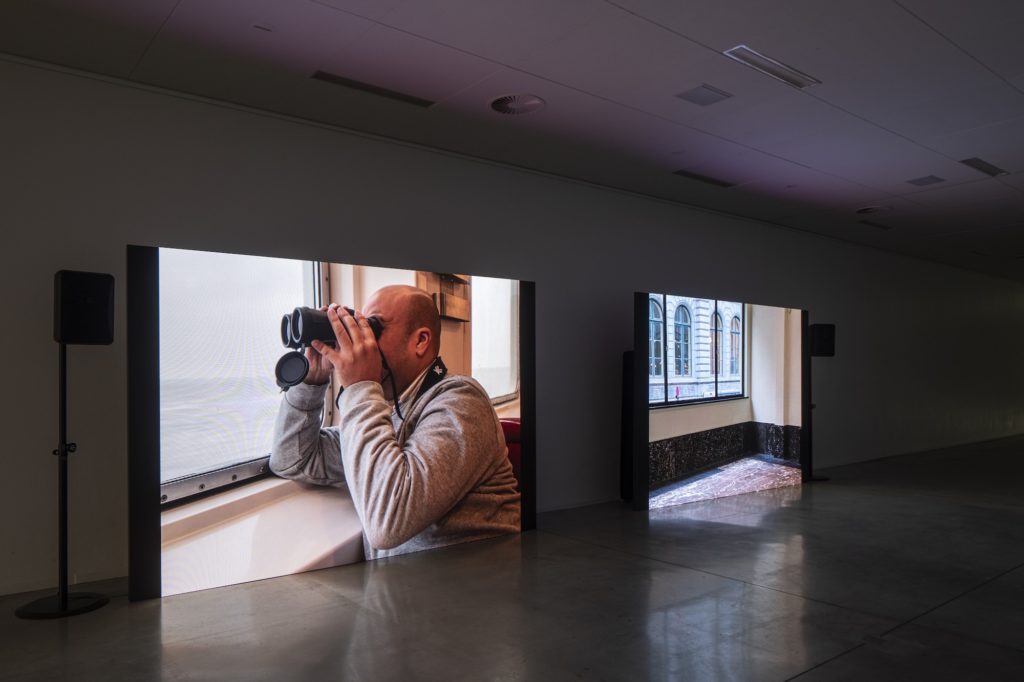
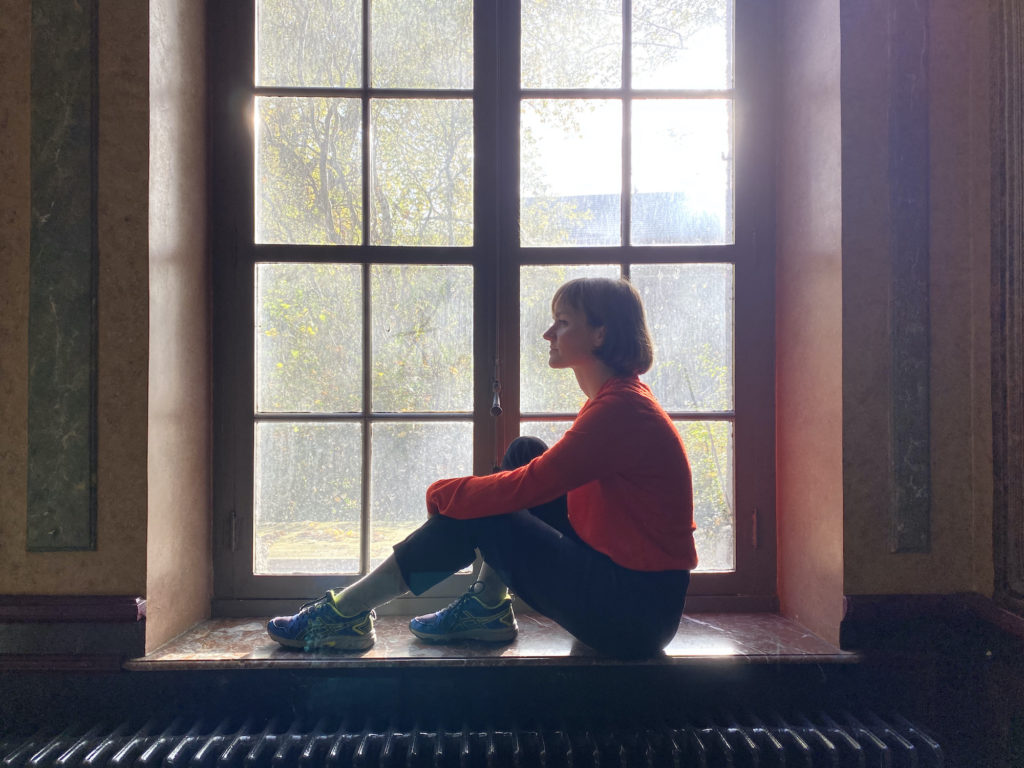

PUBLICATION
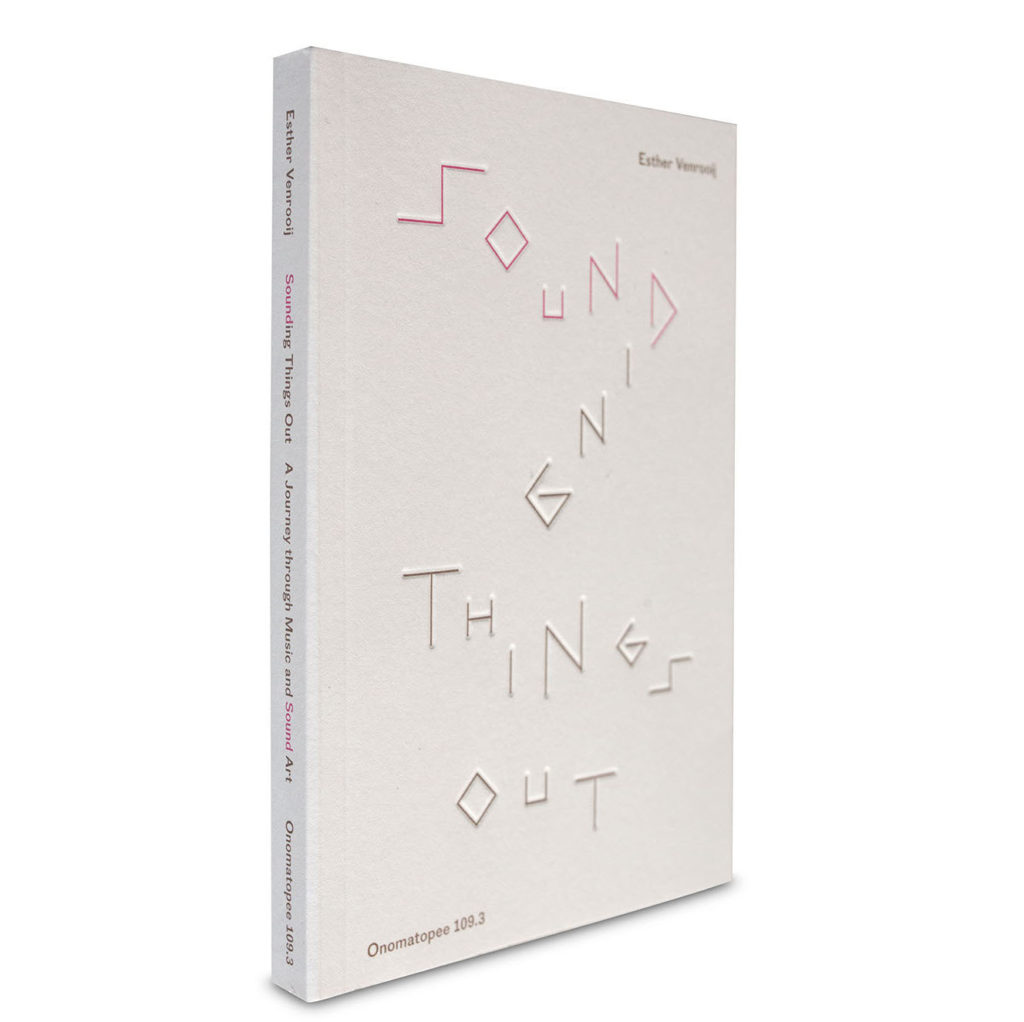
Sounding Things Out offers a very personal journey, yet not in any way a self-centred work. A generous work that given a lot of insights and raises a lot of questions, not only about music and sound art, but also about art education, doctrines in art and society, cultural appropriation and the deep entrenchment of the idea of the (lonesome, suffering) romantic artist in the artworld. She shows that a critical and analytical mindset does not only lead to precise and clear observations, but can also give heartfelt and embodied observations. What do I mean by this? As much as I love analytical and clear thinking, it often impairs or blocks me. It stimulates my thinking, but stops me as an ‘artist’/’musician’. It puts me outside of the field of artistic practice. ‘Sounding Things Out’, however, inspires both thinking and making. – Annelies Monseré (BE), musician and head of Research LUCA School of Arts.
“VERY VERY HIGHLY RECOMMENDED: This – Sounding Things Out by Esther Venrooy – my friends is by far the best writing on sound art and artistic practice involving sound (possibly going into music) I’ve read. Deeply informed, organically told, personally imbued with passion, wit and lived experience – this is the book one would want a novice to read, to use as a primer to hear more, to listen on, to read further. This is bliss – a true poetics of sound, art, performance and space. Brilliance. Utter brilliance.” – Sven Schlijper-Karssenberg (NL), journalist, writer and collector
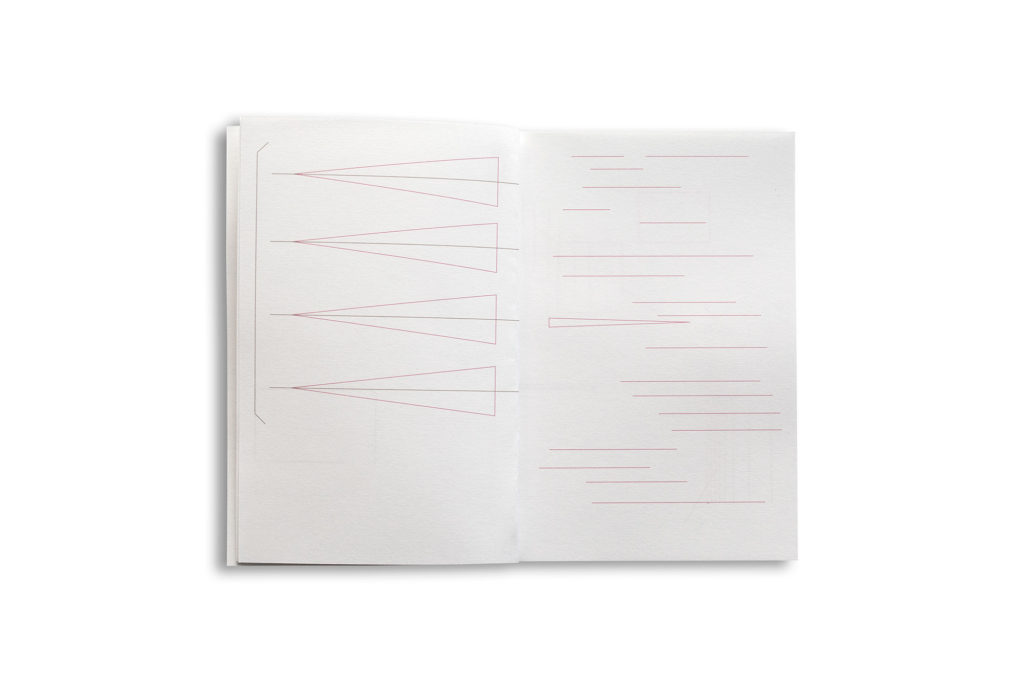
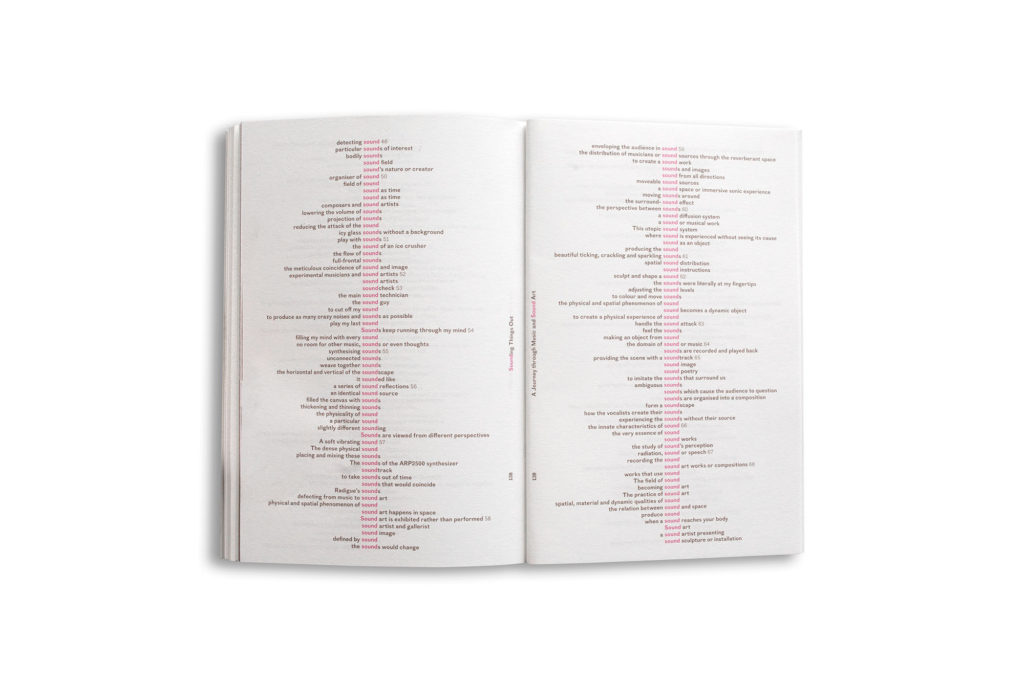
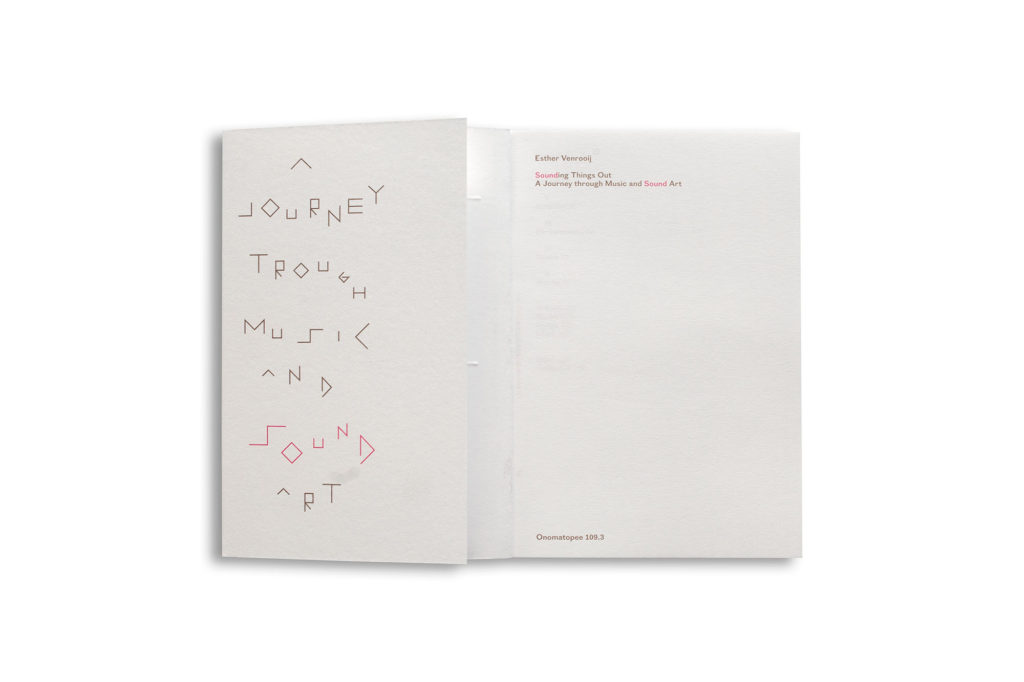
Esther Venrooy, a marvelous musician/thinker who doesn’t release nearly enough work (!!) has written a book, ‘Sounding Things Out: A Journey through Music and Sound Art’, that charts her own development and discoveries, offering excellent and deep observations along the way. Beautifully written, closely and honestly reported, it’s a really great document on a musician working in adjacent areas (improv, field recording, sound art) from the 90s until the present day. Highly recommended (as is Esther’s music) – Brian Olewnick (US), new music writer and visual artist.

Sound is ephemeral. It does not belong to anyone. It cannot be captured in words. Writing on sound art usually focuses on the same familiar figures, but this treatment will broaden the field to explore artistic practitioners like the godfather of movie sound, Walter Murch, the king of the jungle Chris Watson, naturalist and explorer Alexander von Humboldt, pioneer wildlife recordist Ludwig Karl Koch, American pioneer composer and master teacher James Fulkerson, uncompromising composer Eliane Radigue, visionary sound sculptor Edgard Varèse, offbeat composer Luc Ferrari, true maverick Maryanne Amacher, and sonic terrorist MSBR aka Koji Tano and others. Sounding Things Out explains what it is like to work as a composer with sound and installation art. Drawing on anecdotal and personal insight as well, Esther Venrooij explores the spaces between sounds, and follows the subject through the cracks where it isn’t supposed to go, thereby making her sound art theory accessible to anyone with an interest in music and sound. Following sound as a subject matter through the cracks where it isn’t supposed to go, and by exploring the spaces between sounds, Esther Venrooy breaks away from traditional writing about sound. She explores this subject in balancing of her experienced practice as composer working with sound and installation art, with critical reflection.
Author: Esther Venrooij
Text editing: Allon Kaye & Clodagh Kinsella
Image editing: Esther Venrooij & Arthur Roeloffzen
Graphic design: Arthur Roeloffzen
Printing: Graphius, Ghent
Funding: LUCA School of Arts: Research & Science Communication
Type: softcover – dimensions: 110 x 150 mm / 4,5 x 6 inches – pages 144 – ISBN 978-94-93148-27-7
Artistic practice
Compositions, installations and performances
Music is a performance art based on a horizontal concept of time. Time is viewed as a line, which a composer divides into parts or blocks, i.e. form. ‘The composer (organiser of sound) will be faced not only with the entire field of sound but also with the entire field of time.’
Not all works that use sound are necessarily musical pieces. The field of sound, the matter of a musical piece, has broadened out and moved into the domain of the visual arts, becoming sound art. The practice of sound art reflects on the spatial, material and dynamic qualities of sound, and it can activate the relation between sound and space. A source can produce sound, leave this body and emanate into the public space. And when a sound reaches your body, as a listener you become part of this sonic event. Sound art is not considered to be an experience having to do with musical form (beginning, middle, end) or performance.

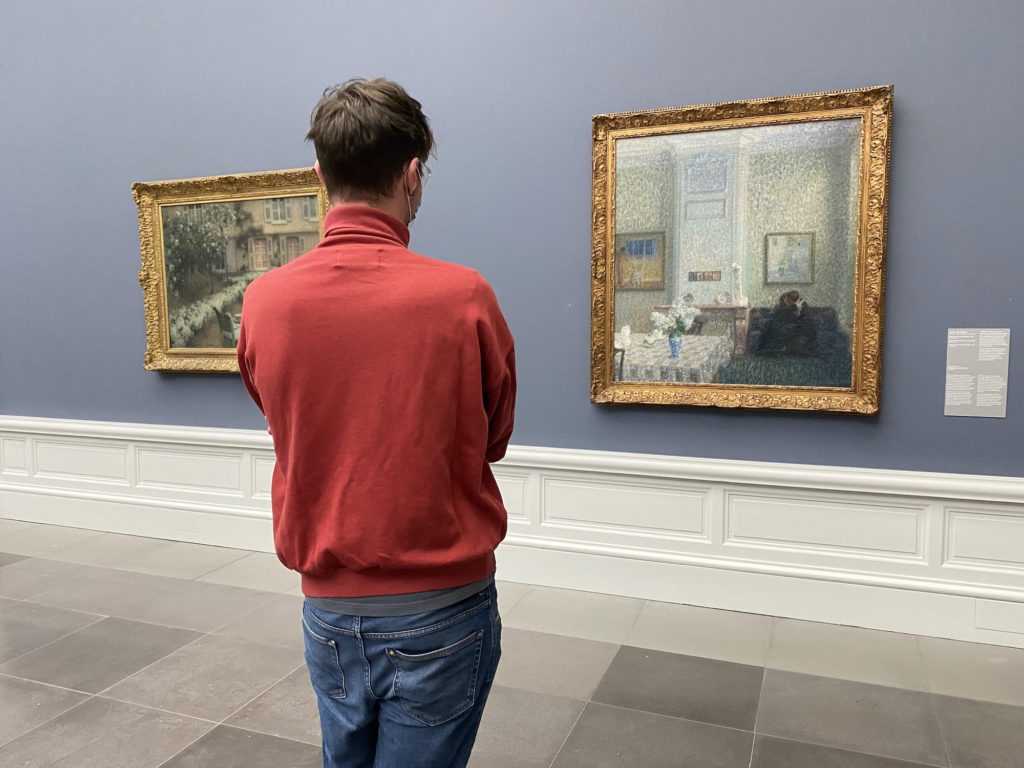
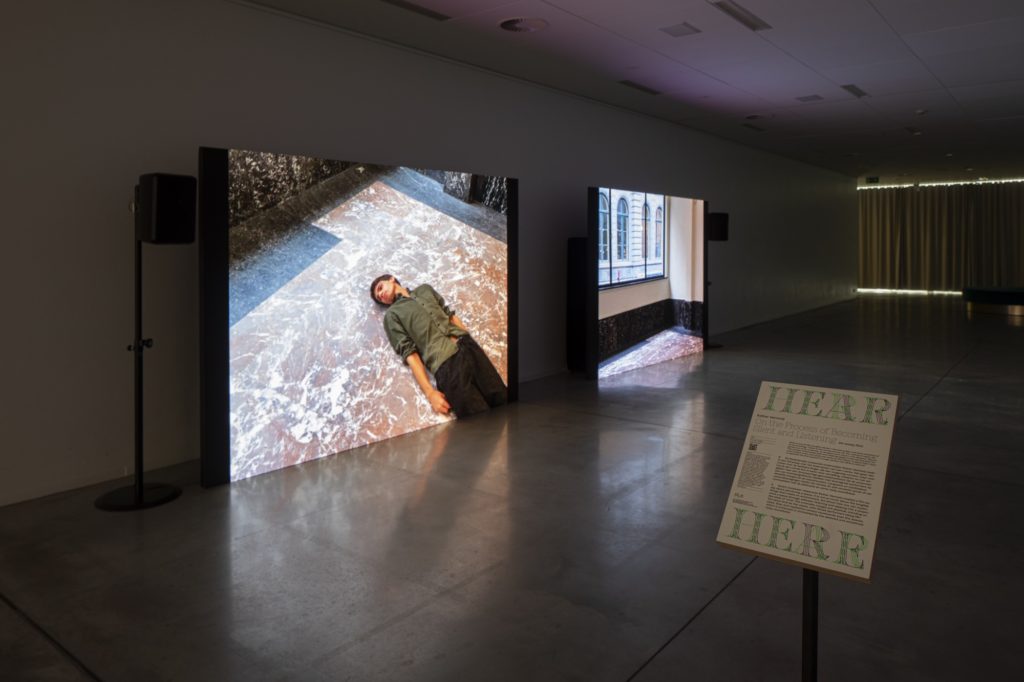
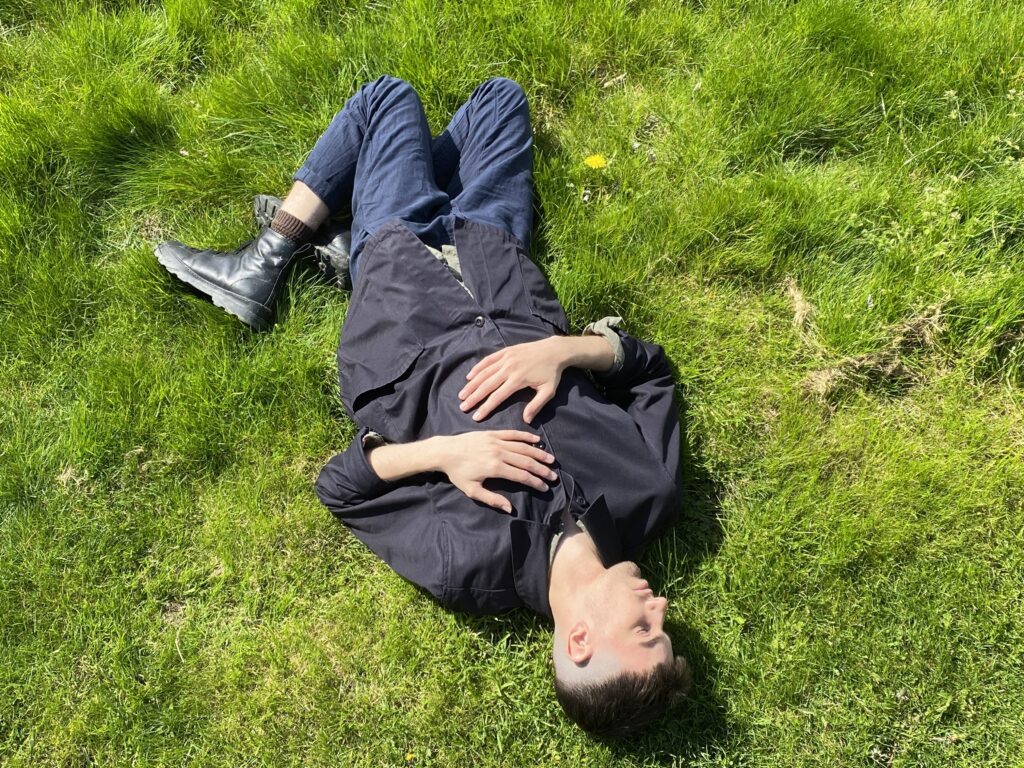

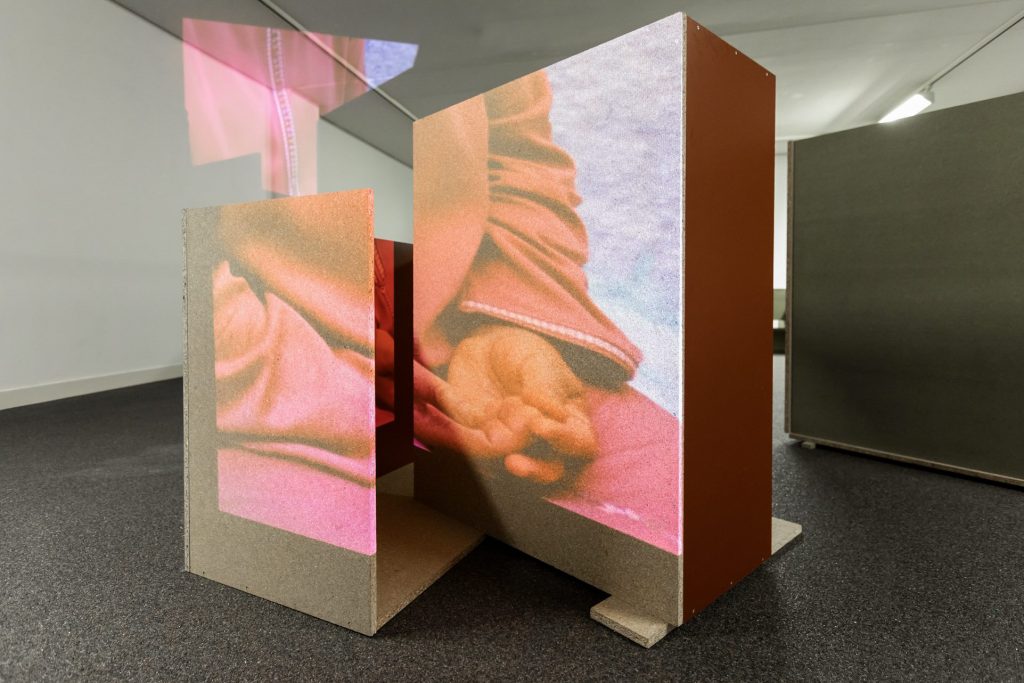
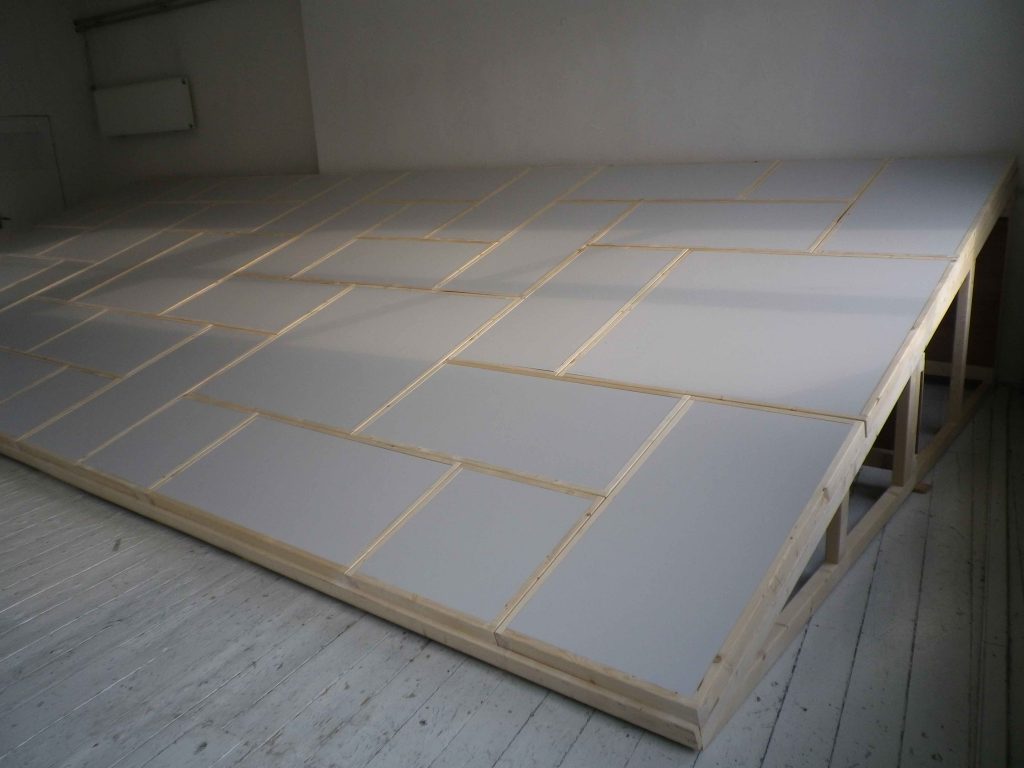
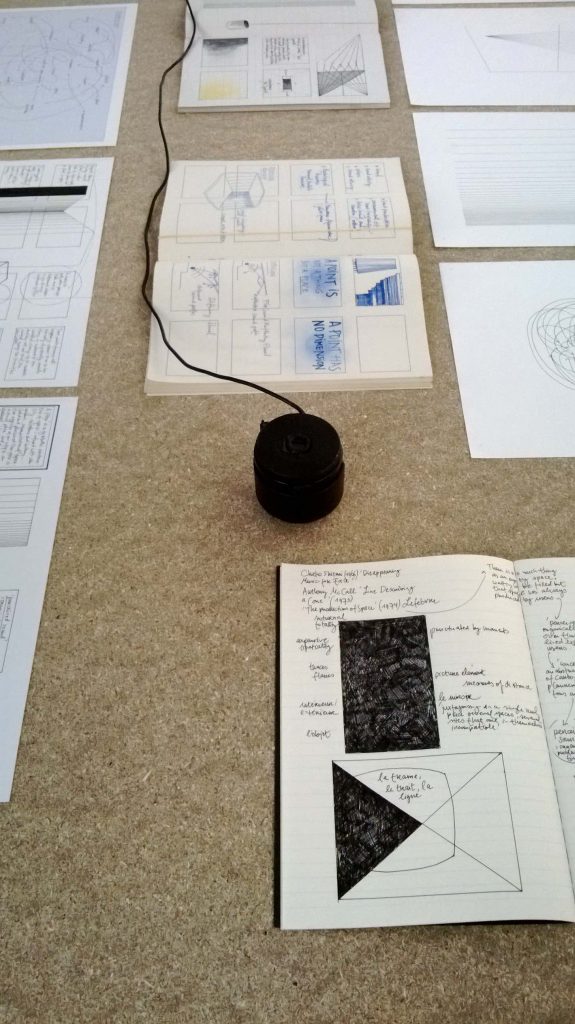


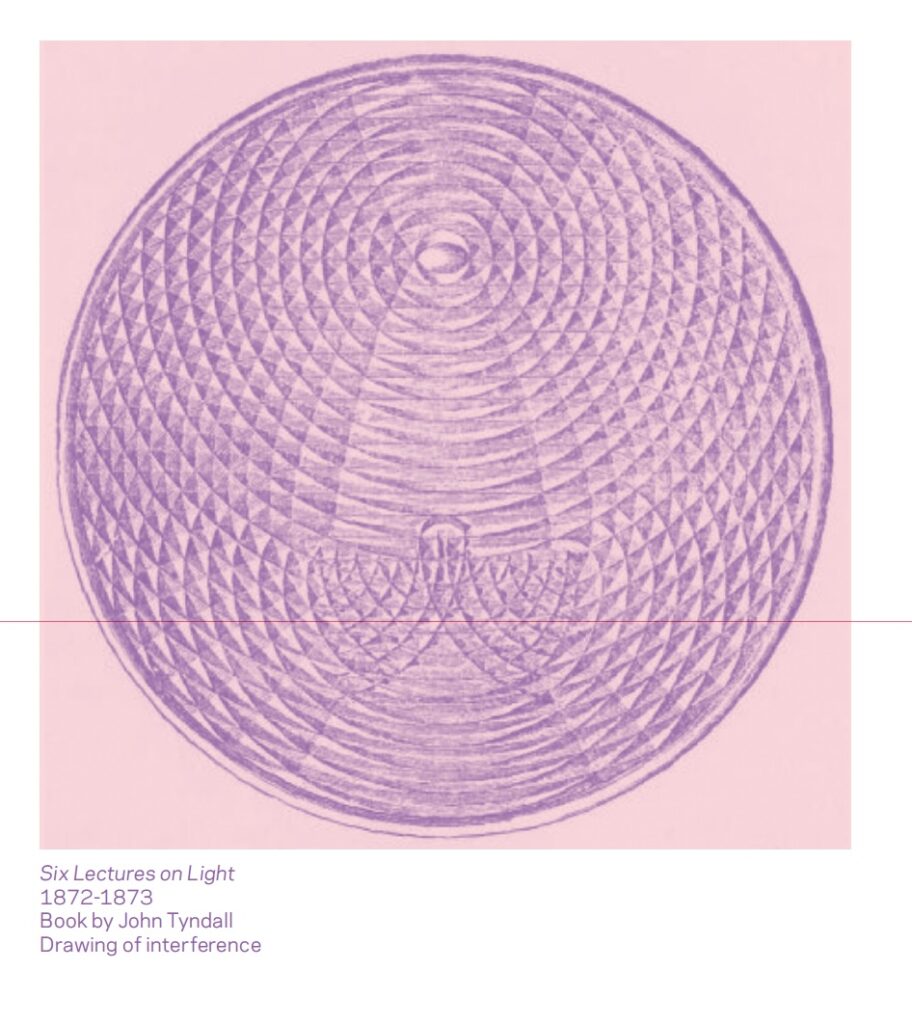

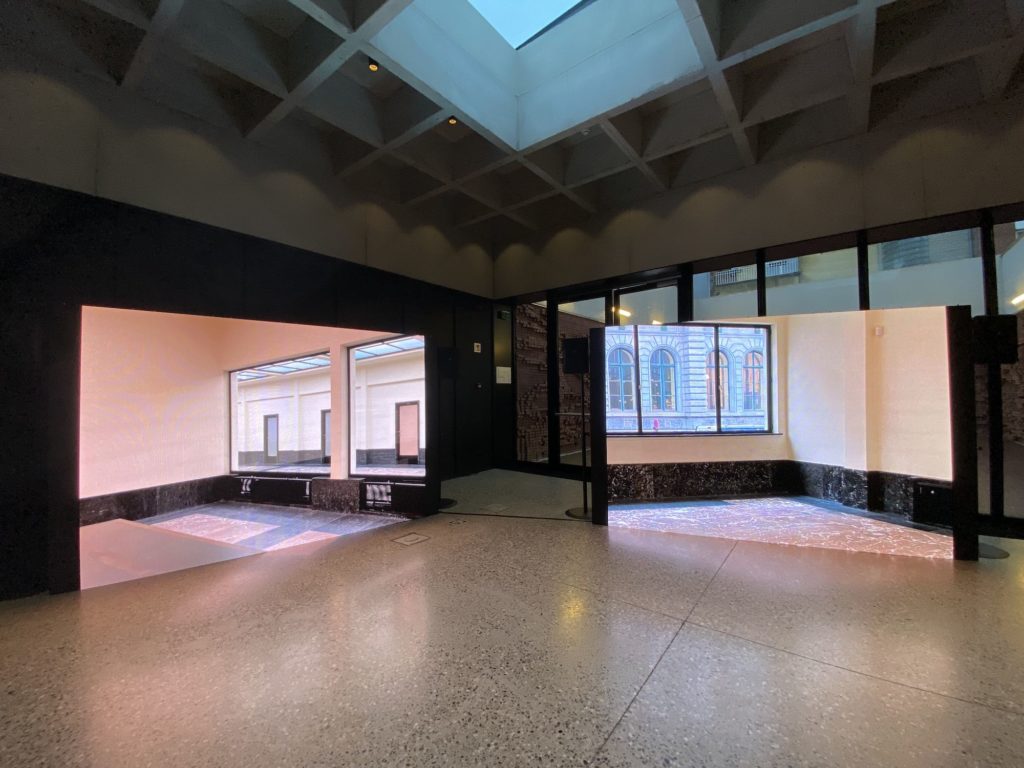
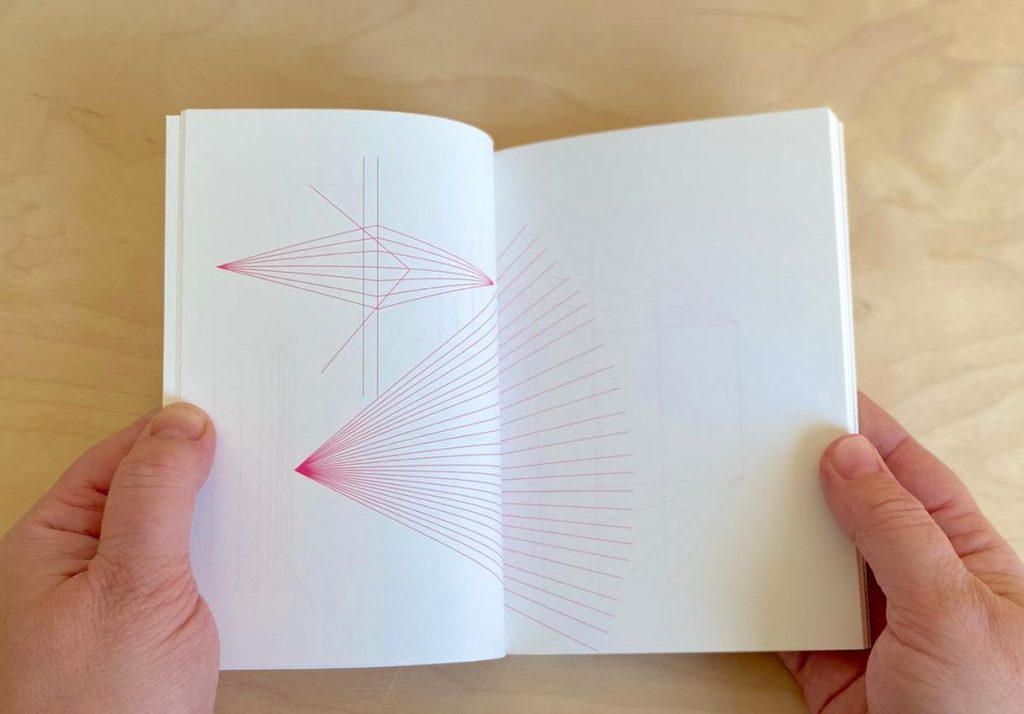
Writings, Images and sounds
Sound art is often defined as an art form dealing with two disciplines: sound and space. Sometimes a third field, acoustics, is mentioned, because a sound work is presented in space, dealing with the spatiality and physicality of sound. I propose to view sound art not only with respect to the fields of sound and space, but to add an additional field: medium. The medium is the object, technology, instruction, or matter that shapes and creates the form of the work. It is the vehicle or vessel we need to create sound waves, which has a defining impact on the aural architecture or acoustics. It could be a collection of tools that delivers the sound, a drawing that evokes an aural image, or even a movable ceiling with a pulley and counterweights. Traditionally in art, the medium is considered to be the link between sound and space, but in some of twentieth-century sound works the medium is not necessarily the go-between sound and space.


